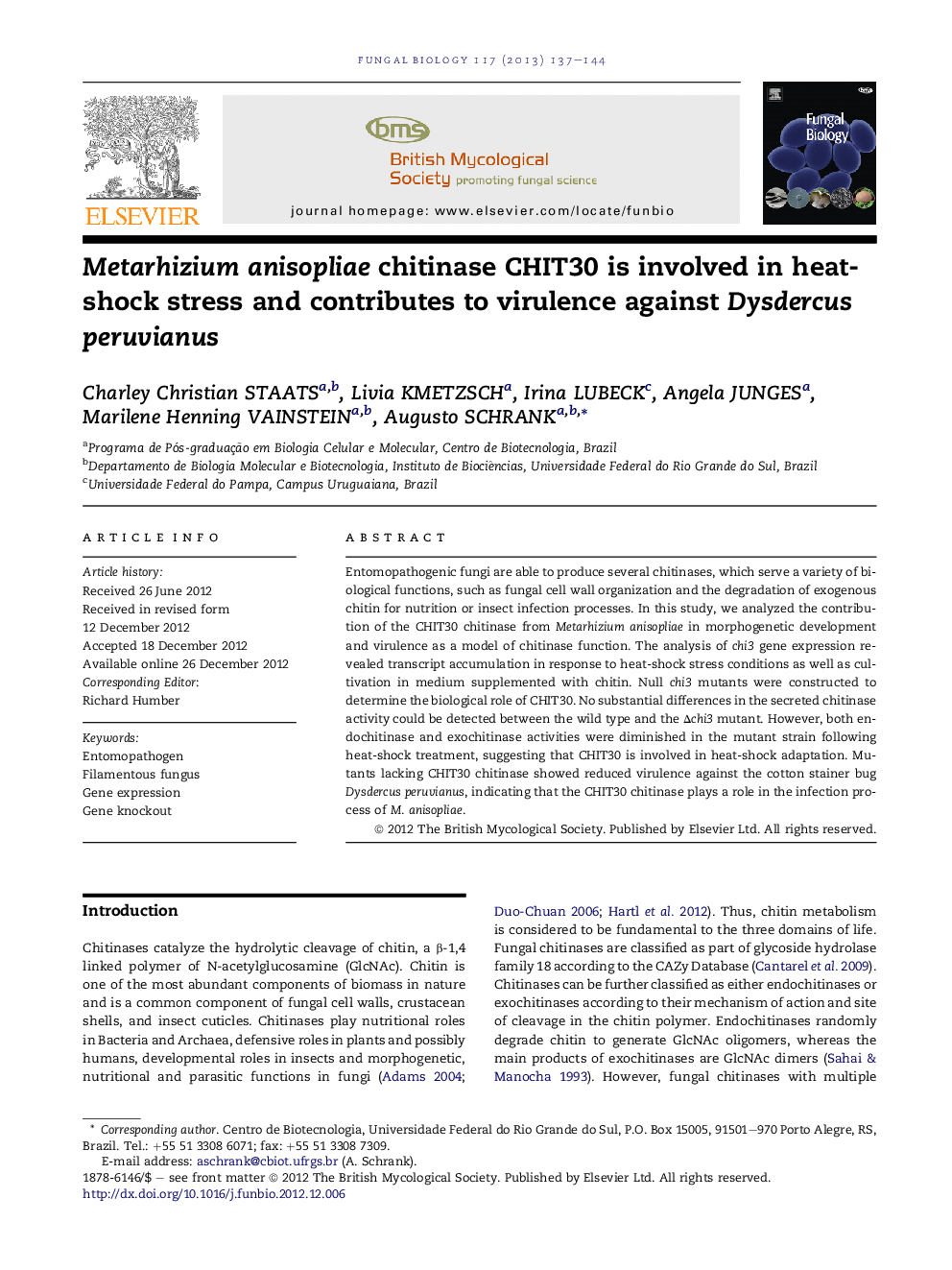| Article ID | Journal | Published Year | Pages | File Type |
|---|---|---|---|---|
| 4357048 | Fungal Biology | 2013 | 8 Pages |
Entomopathogenic fungi are able to produce several chitinases, which serve a variety of biological functions, such as fungal cell wall organization and the degradation of exogenous chitin for nutrition or insect infection processes. In this study, we analyzed the contribution of the CHIT30 chitinase from Metarhizium anisopliae in morphogenetic development and virulence as a model of chitinase function. The analysis of chi3 gene expression revealed transcript accumulation in response to heat-shock stress conditions as well as cultivation in medium supplemented with chitin. Null chi3 mutants were constructed to determine the biological role of CHIT30. No substantial differences in the secreted chitinase activity could be detected between the wild type and the Δchi3 mutant. However, both endochitinase and exochitinase activities were diminished in the mutant strain following heat-shock treatment, suggesting that CHIT30 is involved in heat-shock adaptation. Mutants lacking CHIT30 chitinase showed reduced virulence against the cotton stainer bug Dysdercus peruvianus, indicating that the CHIT30 chitinase plays a role in the infection process of M. anisopliae.
► chi3 transcript levels in M. anisopliae are induced by heat shock treatment. ► chi3 null mutations cause a reduction in secreted chitinase activity. ► M. anisopliae chi3 null mutants are attenuated in a cotton stainer bug Dysdercus peruvianus infection model.
